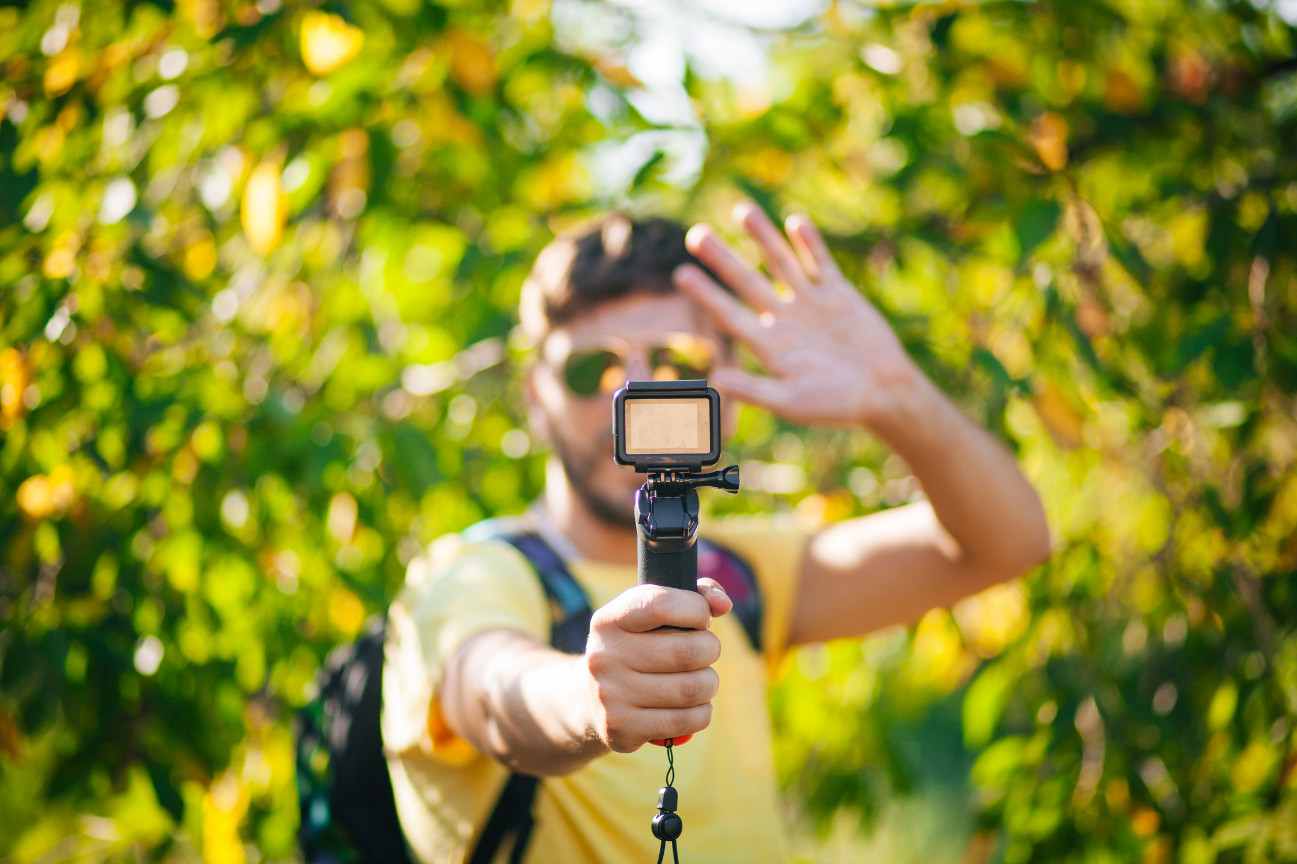How can your emails stand out and get more clients? We’ll show you.
Email marketing gives tour operators a reliable way of reaching travelers. It helps them build loyalty, share timely updates, and stay top of mind.
In this guide, you’ll learn how you can create effective email campaigns for your tour business and which metrics you should monitor. We’re also including list-building tips and real-world campaign examples for inspiration.
How to Set Travel Email Marketing Campaign Goals
Knowing what you want your campaign to achieve will help you set stronger travel email goals. Ask yourself: Do you want to boost bookings, nurture repeat travelers, or build awareness for your newest tours?
Having a goal will help you point to clear performance data to prove your progress. Tie each goal to measurable KPIs, such as open rate, click-through rate (CTR), or booking rate, so you can track what works.
You should also segment audiences based on travel interests, location, or booking history. This data will allow you to shape goals specifically for new travelers and loyal guests. Every campaign should link back to one core business objective.
Email Campaign Types and Creative Ideas for Tour Operators
The best travel email campaigns blend storytelling with clear actions you want readers to take. You guide travelers with inspiring ideas while giving them simple next steps.
Try to balance emotion with strategy. Your emails feel helpful and still drive bookings, interest, and deeper connections with your audience.
Welcome/Onboarding Sequence – First Engagement After Sign-Up
A warm, story-driven welcome email helps you build trust and set clear expectations from day one. You personalize messages with customer names and preferred destinations to make the introduction feel genuine.
You can also offer a first-time discount or link to a featured tour or blog to spark interest.
Inspiration / Destination Spotlight Emails
Destination spotlight emails help you showcase scenic locations, unique tour packages, and cultural moments that travelers crave. Share amazing, Instagrammable photos and stories to spark curiosity.
You can also share travel itineraries and behind-the-scenes content to inspire wanderlust.
Seasonal or Event-Driven Emails
Tie promotions to peak moments. Send emails that'll promote events like summer escapes, winter adventures, or local festivals. You'll do better if you schedule email blasts around key travel dates and holidays to stay relevant.
Timely offers create natural urgency and push travelers to book before popular tours fill up.
Personalized Trip-Recommendation Emails
Personalized trip-recommendation emails use past bookings or browsing behavior to suggest tours that fit each traveler’s preferences. You should create personalized email campaigns to showcase upcoming tours and packages that match their interests.
This level of relevance boosts click-throughs and helps you turn more curious readers into confirmed bookings.
Last-Minute / Flash Deal Emails
Last-minute and flash deal emails work best when you lean into urgency. You promote limited-time discounts on tours, excursions, or adventure trips.
Remember to keep your copy tight and clear. Countdown timers, bold CTAs, and weekend getaway offers can convince readers to book trips faster.
Post-Trip Follow-Up Emails
Post-trip follow-up emails help you maintain a strong connection with clients. You can thank travelers for their business, ask for a review, or offer a small loyalty incentive.
You can highlight customer reviews, testimonials, and photo stories from past travelers to attract new guests. This will also give you fresh user-generated content for your marketing campaigns.
Re-Engagement / Win-Back Emails
Re-engagement emails help you reconnect with past travelers who haven’t booked in a while. You optimize email subject lines and visuals to improve engagement, using friendly hooks like “We Miss You!”
You can also offer an exclusive discount to spark interest and encourage them to come back.
Loyalty Programme / VIP Offers Emails
Loyalty and VIP offer emails will reward your most engaged travelers. You invite subscribers to exclusive VIP or loyalty travel experiences, early access, or special perks.
Sharing personalized rewards and referral opportunities gives your clients a reason to stay subscribed. Plus, it makes every trip feel like it’s worth the effort.
Educational / Value-Add Emails
Educational emails provide travelers with helpful content they can use right away, such as packing tips, destination guides, and important safety updates.
Do your best to build trust with informative emails about travel safety and sustainability. It positions you as an expert in travel planning.
How to Build an Email List for a Travel or Tour Business
You build a strong travel email list by using ethical methods that attract people who genuinely want to hear from you. To capture more leads, you can add:
- Website opt-ins
- Blog sign-ups
- In-person event registrations
- Social media CTAs
Offering lead magnets like downloadable travel guides or discounts gives people a clear reason to subscribe. You should also automate follow-up emails after inquiries or bookings to nurture leads from the start.
A few things to keep in mind:
- Stay compliant with GDPR and CAN-SPAM to build consumer trust.
- Keep your leads engaged with double opt-ins.
- Remove inactive email addresses regularly to keep your email list healthy.
Strategies to Grow Your Email List for Travelers
You can grow your email list faster by using advanced tactics that give people reasons to join and share your brand.
Interactive quizzes like “Find Your Next Adventure,” partnerships with travel influencers, and referral programs help you reach new audiences. You reward loyal customers with referral bonuses or free add-ons to encourage sign-ups through word of mouth.
Adding testimonials or star ratings to your sign-up forms gives social proof. Or why not promote sign-ups through booking forms, chatbots, and QR codes? These strategies can help boost conversions.
Steps to Craft Effective Emails for Your Marketing Campaign
You create stronger travel emails by following a simple, consistent framework that keeps readers focused and engaged.
Use this structure when building your email marketing campaigns:
- Write a short, benefit-driven subject line that grabs attention.
- Design visually appealing newsletters featuring travel tips and destination highlights that keep readers interested.
- Include one clear CTA so travelers know exactly what action to take.
- Test and personalize elements. This includes subject lines, visuals, or copy through A/B testing.
Here’s another tip. Use mobile-friendly templates with a clean design and scannable text. Most people use smartphones to read their emails.
KPIs Tour Operators Should Track in Email Marketing
To understand how well your travel emails perform, you need to track essential KPIs. You can track open rates and click-throughs to measure campaign success, along with other metrics that show how your audience responds:
- Open Rate: Measures the percentage of subscribers who opened your email.
- Click-Through Rate (CTR): Measures user engagement with your content.
- Conversion Rate: Reveals how many readers booked a tour.
- Unsubscribe Rate: Signals issues with frequency or relevance.
- Revenue Per Email: Reflects direct business impact.
We suggest you use analytics tools like Mailchimp or HubSpot to track your data. Don’t forget to run periodic audits to improve future campaigns.
Examples of Successful Travel Email Campaigns
You get better results when you study what successful travel brands are already doing. After sending emails, you should analyze your metrics to identify the most effective content types. You can refine your approach afterward if needed.
Travel Nevada, for example, rebuilt its email design with stronger imagery and clearer CTAs. It resulted in a 150% increase in visitor-guide requests and a 77% jump in partner-link referrals.
Japan Ski Experience added an email lead-capture form to its site, growing its list by about 70 subscribers per day during peak season.
These examples show how personalization, tone, and strong visuals can inspire your next campaign.
Key Takeaways
- Tie every email campaign to a clear goal, such as increasing bookings, reactivating past guests, or promoting new tours.
- Mix simple storytelling, strong visuals, and one clear CTA so travelers feel inspired and know exactly what to do next.
- Keep improving results by segmenting your list, testing subject lines and offers, and using performance data to refine future campaigns.
Frequently Asked Questions
How Often Should Tour Companies Send Marketing Emails?
Send marketing emails one to two times per week to maintain visibility without overwhelming subscribers. Increase frequency during peak seasons or major promotions. Test different send rates and adjust based on engagement and unsubscribe trends.
What Subject Lines Work Best for Travel Emails?
Use emotion-driven and action-focused subject lines to increase travel email opens. Write lines like “Your Next Adventure Awaits” or “Limited Spots: Summer Getaways Are Here!” Keep subject lines under 50 characters and avoid spam triggers such as excessive punctuation or all caps.
What Should a Travel Email Newsletter Include?
Create a strong travel email newsletter by using eye-catching destination photos, concise tour updates, and helpful travel tips. Keep the layout easy to scan and end with one clear CTA like “Book Now” to guide readers.












